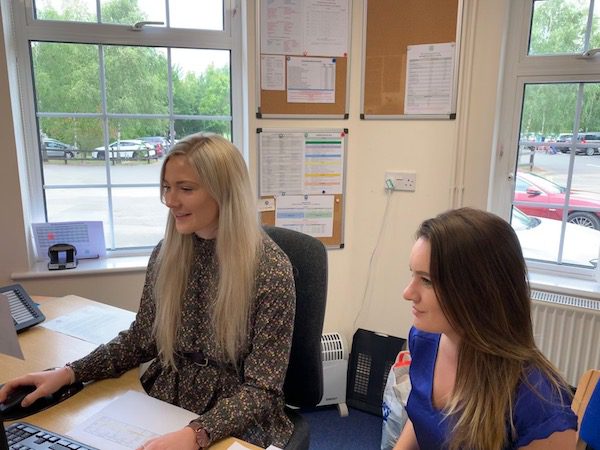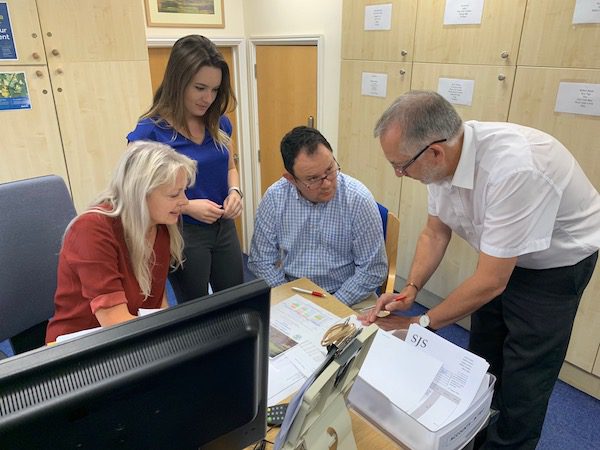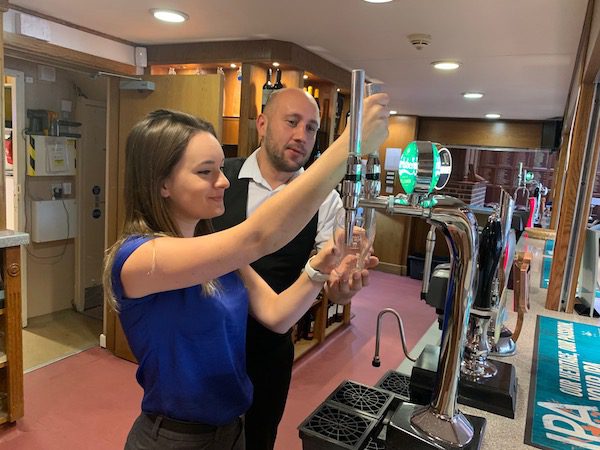It is really important in these challenging times to have a robust process to your membership sales, says CMAE’s Director of Education Mike Braidwood. Success will be based on process and professionalism.This process should be written down and your staff trained on it fully.
By having a process for selling memberships you ensure consistency in your messaging and you can also impress the prospective member by appearing prepared and professional. Best of all, you have rehearsed all of the benefits of your club and you can have answers to all the potential questions or objections that you might face.
Here is a robust 10 step plan which will guarantee that you turn many more of your membership enquiries into a closed sale.

1. Ask the prospective member to fill out a brief application form in advance.
By doing this you have moved the prospective member closer to joining already, and you have gathered their data. At the end of the show round you have a document that you could ask them to sign to conclude the deal!
2. Qualify them
It is important to qualify your prospect quickly, so have a few quick questions ready at the beginning to ascertain their potential position. You might want to do this over a cup of coffee in your office or when they are filling out the application form.
For example
Q: Are you currently a member of a club?
Q: Are you new to the area?
Q: Are you considering joining any other clubs in the area?
3. Start the show round process by telling them exactly what is going to happen
Inform the prospective member that: they can stop the tour at any stage if they don’t think the club is for them; they can ask questions at any time; and you will ask them to sign up at the end. In this way both you and the prospective member are clear of the process that is about to happen or take place (instead of happen). They are most likely looking at a number of golf club options, so you want to try your utmost to close the deal on this occasion.
4. Build up a rapport – find out more about the prospective member
During your show round you need to quickly establish what interests your prospective member and what they are looking for out of a club membership. You then need to tailor your tour and benefits to their needs – do not lie! But emphasis the things they like. If, for example, they are competitive, you might want to pause in the show round by the club notice boards to demonstrate how many competitions you run. Prepare as many questions as possible in order to find out more about them.
5. Prepare your presentation
You must present at least 10 good reasons for a prospective member to join your club. Have the questions prepared on index cards so you can prepare for each category of prospective member, for example: good player; bad player; social; non-social; kids; no kids; corporate (up sell networking) etc.Your club will have many plus points in various capacities and you need to bring the right ones to the forefront. There is little point discussing your great junior program to someone who has no kids. To identify each prospective members category, you need to gather information on them quickly.
6. Prepare a sales script and practice it
It is vital that your show round is scripted, practiced and shared amongst the management team so you are all selling the same benefits and giving consistent information. You need to have your statistics and facts 100% correct, because it is likely your prospect has done their research on the web and will know a lot more about your product than you think. It is also impressive for the prospect if you know minute details about your facilities.
Know your stuff:
- Club inception / history
- Course lengths, SSS / slope ratings
- Key club events
- Size of function space
- Type of grasses on the course
- Number of members
- Popular playing times
- Catering hours
- Emphasise membership benefits
- Any other information you feel is relevant to your club
7. Carefully structure a club tour with key touch points
Show your facility round in its best light. Some 90% of your show rounds will be pre-booked, thus giving you a chance to control the experience and check the show round route in advance to ensure it is perfect. Also brief other team members in advance that you will be doing a prospective member show round so they are on their A+game (although this should be happening all the time!).
There is no point in taking a prospective member on a show round if the bar is shut or they are struggling with service delivery. Likewise, avoid show rounds when the greens have just been hollow cored!
8. Prepare answers to objection questions
It is important that you and your team prepare answers to potential objection questions. Brainstorm these and keep adding to the list if and when you get new.
Here are some examples:
Q: “I understand the course down the road is 20% cheaper.”
A: “Why do you think that is?”
Some objection questions are going to be hard to answer, so in these circumstances answer the question with another question. What you have to avoid is arguing with the prospect or getting into a lengthy debate over one of their points.
Q: “Your club is expensive.”
A: “Compared to what?”
You have no idea what price sensitivities your prospects have, so if you ask them what they are comparing it to it gives you a better chance to respond to a specific statement rather than a general one.
Q: “Word has it that not all of your members are happy.”
A: “I am surprised to hear you say that. Our member surveys, focus groups, etc, are showing that we have 90%+ member satisfaction.”
Q: “What sort of deal can you do for me?”
A: “We have a number of introductory offers. Let me talk you thorough them…”
You will inevitably be asked for discount or some form of deal, so you had better have these “deals” prepared in advance and agreed with your Board / Committee.
9. Have a closing wrap up/summary prepared
Like a lawyer in a court room, you need to have a good summary wrap up prepared. This needs to reinforce all of the positives that had impressed the prospective member, whilst reiterating the key reasons they have been thinking of joining your club. It might be a good idea to do this in a comfortable surrounding within the clubhouse or your office and have the prospect sitting down, so they can’t walk away…
For example: “Well that’s the end of our membership tour of club X and I am sure you will agree with me that the club appears to tick all of your boxes. I am confident that you are going to enjoy the competitive environment the club provides, whilst your son will really enjoy the complimentary junior lessons we offer each Sunday morning.“I am glad you think you will use our F&B offering and yes, the Sunday brunch is a great way to get your entire family down to the club.”
A statement like this just reinforces all of the positives.
10. Invite them to join
Finally, after your show round, invite them to join the club. It is a well known statistic that the highest percentage of people joining clubs are invited Therefore, who better to offer this invitation than the club manager! Quite simply, say “thank you for your time today, we would be delighted for you to join club X”.
Remember, preparation is the key. If you are not prepared and do not have all the answers, leaving you to say to the prospective member “I will have to get back to you”, then you add the risk that they are going to leave without joining. And they may never come back.
Article published in Clubhouse Europe issue 5





